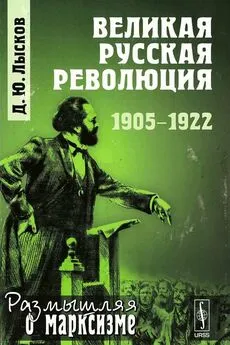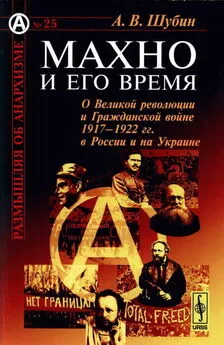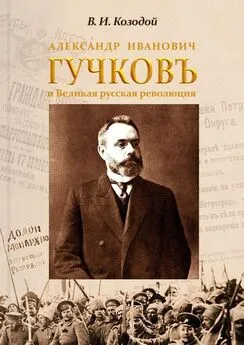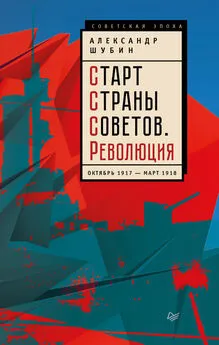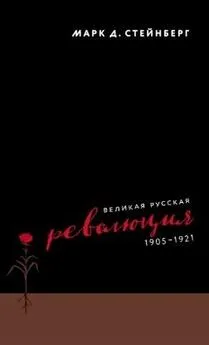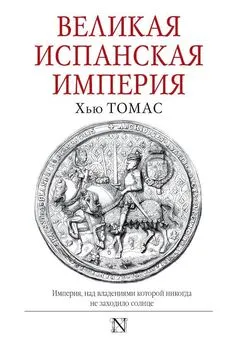Александр Шубин - Великая Испанская революция
- Название:Великая Испанская революция
- Автор:
- Жанр:
- Издательство:Книжный дом «ЛИБРОКОМ» aka URSS
- Год:2012
- Город:Москва
- ISBN:978-5-397-02355-9
- Рейтинг:
- Избранное:Добавить в избранное
-
Отзывы:
-
Ваша оценка:
Александр Шубин - Великая Испанская революция краткое содержание
В настоящей книге вниманию читателей предлагается комплексный анализ испанской революции и гражданской войны 1930-х гг. На основе обширных архивных материалов и современной испанской литературы автор реконструирует сложные обстоятельства истории Испании 30-х гг., когда эта страна оказалась в эпицентре мировой политики. Героями книги являются не только испанские политические деятели — от анархистов до фашистов, не только ведущие мировые лидеры того времени — Сталин, Чемберлен, Муссолини, Гитлер и другие, но и советские люди, которые приняли участие в революционных событиях. Многие материалы советских военных специалистов публикуются в книге впервые. Однако главным героем книги является все же испанский народ — расколотый, но переживающий «звездный час» своей истории, когда судьбы мира зависели от энтузиазма и действий простых людей труда.
Книга будет полезна исследователям истории 1930-х гг., преподавателям, студентам-историкам, а также всем, кому интересна история Испании, левых идей, социально-политических и международных конфликтов кануна Второй мировой войны.
Великая Испанская революция - читать онлайн бесплатно полную версию (весь текст целиком)
Интервал:
Закладка:
The dictatorship of the manager was replaced by the power of the collective represented by its core group (first of all trade-union leaders from CNT structure) and almost religious influence of anarchist slogans, contradiction with which could be considered the counterrevolution. However, the influence of the ideology shared by the significant mass of workers played the role of mobilizing the masses including at the place of production. The anarcho-syndicalists and the left socialists managed to create a rather effective and democratic social system (to the extent possible in the conditions of Civil War) based on the industrial democracy. Despite the heavy economic situation caused by war and split of the country, the collectivized industry prevented a steep decline in production. Introduction of industrial democracy system drove the productive efficiency which after all might be possible at the Spanish enterprises of the day in conditions of war and partial economic blockade. A myth about «disorganization of production by anarcho-syndicalists» could be considered completely wrong. When the workers and engineers took possession of factories, they did their best. The production volumes required to meet war demands exceeded the pre-war performance. However, the model of self-government and industrial democracy to be coordinated by trade unions and semi-government public structures dissatisfied the representatives of other political forces. In 1937 it resulted in a considerable aggravation of political struggle in the republican camp. The struggle against the industrial democracy which took place during Negrin’s government (1937–1939) contributed to a decline in the economic growth rate in comparison to the Largo Caballero governance.
The rural collectivization initiated by anarchists also received wide expansion within the Republic. Unlike in the USSR, it had not been caused by governmental pressure upon the peasantry. In some cases the majority of peasants forced minority to collectivization, in the other cases individual farms were preserved. Sometimes the radical anarchist detachments compelled most peasants to join collective farms, but CNT and leaders of anarcho-syndicalists opposed it. The general support for collectivization and its voluntary character for the majority of peasants were also confirmed by the fact that after defeat of anarcho-syndicalists in the conflict with communists in May-August, 1937, when anarchists had already no opportunity to lay violent hands on their opponents, the mass movement of agrarian collectives continued and even extended. As a whole, the collectivization produced a good effect on a nationwide scale as well. In spring 1937 the food situation noticeably improved, the cropland acres were extended which was admitted even by the opponents of anarchists. Successes and failures of particular collectives depended on their leaders, but as a whole, the movement which liquidated a tax burden without prior arrangements, latifundium system and small-scale crofting agriculture demonstrated its sustainability.
From September 1936 till May 1937 the F. Largo Caballero government of the Republic promoted deep social transformations. The anarcho-syndicalists participated in it since November and therefore it was not just a government of the People’s Front, but of a wide anti-fascist coalition. The activity of anarchist ministers in the government did not basically have just any specifically anarchical, but all-democratic character and fitted in the framework of the social state. While CNT was in the government, the opponents of anarcho-syndicalist social and economical experiment could not develop a serious attack against the industrial democracy sector. As soon as CNT left the government, they launched an attack which resulted in the essential curtailing of the social revolution. The presence of CNT in the government was a condition for preservation of those revolutionary achievements which had been reached in autumn of 1936. After syndicalists had joined the government of Spain, they conducted relatively pluralist economic policy which was supported by Largo Caballero and in fact became the basis of the social and economic line of the cabinet, as a whole.
During the Largo Caballero governance the military construction of the Republic was based on a combination of militia principles at a level of divisions and those of regularity at a level of units. That combination didn’t insure the Republic against a defeat in Malaga, but enabled to defend Madrid and to win the Italian corps near Guadalajara. The Negrin-Prieto government began to destroy the militia system, but didn’t gain a victory in the war. The decline in soldiers’ enthusiasm and growth of caste as well as a lack of control over officers contributed to the decrease in combat proficiency of the republican army in the second half 1937 and its defeats. Toppling of Largo Caballero frustrated the preparation of operation in Extremadura which could force the war from the positional phase which was fatal for the Republic.
Infighting more characteristic of the Republic than of Franco regime was not by itself dangerous to the Republic. Only during the short moments it could pose a threat to the front line, and Franco didn't take advantage of the opportunity. The internal political conflicts had a negative impact on the destiny of the Republic not so much through their course, as through their outcome in May 1937.
In the first half of 1937 the underlying contradictions built up in republican camp. The communists were opposing the revolution which had burst in Spain, they believed that the revolution broke away from the Soviet pattern they tried to achieve and also prevented a victory of the Republic. With regard to the latter assumption they saw eye to eye with Azaña, Prieto and Negrin. The political center of Republic veered to the right, the communists became the center of consolidation of the Party of Order which opposed the social revolution. Largo Caballero was on side of the revolution which took place in Spain because he considered it a tool of mass mobilization required for a victory over fascism and because the revolution assigned a clear meaning to the struggle — a victory of a new society over an old one and not just preservation of Spain which had existed up to 1936. Largo Caballero and its supporters sought a model of the new society which would develop during the revolution and would match the principles of democratic socialism. After they got acquainted with the ideas defended by the syndicalists in the government, the caballerists began to incline to an idea to create a society which basic structure would comprise workers’ trade-unions.
On May 3, 1937 PSUC and Catalan nationalists provoked the armed conflicts with anarcho-syndicalists in Barcelona which were announced «an anarcho-trotskyst rebellion». In spite of the fact that the parties managed to reach the cease-fire agreement, the conflicts of May 3–6 were used by the opponents of CNT and POUM to establish control over Barcelona and begin reprisals against opposition. But for as long as Largo Caballero government had the power, the investigation of events in Barcelona could result in the discredit of PSUC and communists as a whole. Therefore, the prompt overthrow of Largo Caballero, who disagreed with the interpretation of conflicts as the anarcho-trotskyst rebellion, became a matter of principle for the communists. Thus, the overthrow of Largo planned by the communists as early as in March became an immediate task in May. On top of that, the CPS was ready to keep Largo as a formal head of the government provided that a real power and, first of all, the control over force structures would be concentrated in the hands of the block communists and PSOE «centrists».
The communists struggled to change the governmental strategy and military policy not limiting themselves, if necessary, to the overthrow of the head of the government in power. However, it did not mean that they planned all course of the May political crisis in advance starting from armed conflicts in Barcelona. They were ready to operate resolutely and roughly winning back a position by position from their opponents, but when their actions in Barcelona caused discontent, they were even taken aback in the first moment. Moreover, the result of their actions in Barcelona did not guarantee to the communists the crushing defeat of the opponents and even placed their own positions under a threat. In the circumstances concerned the communists were actually saved by leaders of the PSOE right wing and President Azaña. It resulted in a new division of powers where positions of communists were not yet certainly dominating though rather strengthened. The communists could take advantage of another, less risky occasion to advance in transforming the Spanish Republic into the «national democracy». They were not almighty manipulators; their force involved the other thing — the consistency with which they headed in the direction of 1'etatisation pulling PSOE l’etatists along after themselves.
After the May events, Largo Caballero could continue to head the government upon one of two conditions: either he would yield to dictation and turn into a nominal figure or would take advantage of an unfavorable role of PSUC in the events in Barcelona and weaken the communists and create the government on a new trade-union basis (having balanced GWU and CNT in the rights) and ignoring the president’s opinion appeal to the organized masses. It, certainly, once again would break up the Constitution, but after July 18 it had been broken quite often. Such is Revolution. It was one of the crucial points in the development of the Spanish Revolution, so also of the world. Would there be a new syndicalist model which would exist alongside with American, Soviet and fascist variants of the regulated industrial society? Would the countries taking the path of a social state face a dilemma: to create a new society on the basis of authoritarianism, capitalist pluralism or, as in Spain, on the basis of industrial democracy?
It is obvious that the government which core group would consist of trade-union leaders of CNT and GWU would continue the social transformations focused on the improvement of collectivization and syndicalisation. Such government would investigate the events in Barcelona in the way unfavorable for communists, which could result in slackening of communists in the force structures as well, and at the end of the day — defeat of CPS in the race for power. However, the same course of events meant the overthrow of not only communists, but also of the right socialists and republicans. But in May 1937 Largo Caballero didn’t dare to operate revolutionary. «Spanish Lenin» did not enjoy determination of true Lenin. At the same time, Largo Caballero gave up a role of figurehead of a ship which suddenly altered the course line.
As he didn’t dare to break up with the party-presidential system, Largo Caballero failed, and on May 17 M. Azaña charged a socialist J. Negrin focused on the closest cooperation with CPS with the formation of a new government. The political upheaval was prepared in spring 1937 not in favor of figures, but in favor of the communists block and the right wing of socialists. The social-liberal and communist politicians fixed upon Negrin as the most convenient compromise figure.
Emissaries of Comintern directly participated in such manipulations and were a force in a coalition of «May winners». It was obvious that the right socialists couldn’t have triumphed over Largo Caballero and the social revolution, if they hadn’t obtained communist support.
Anti-fascists had more than one (external), at least two factors of resistance (which had been already proved by the defense of Madrid) — the revolution and assistance of the USSR. It was impossible to win at that conjuncture, having only one of them. The defeat resulted from not only the weakening of Soviet assistance, but of the revolution as well. Having paralyzed the revolution, the new Spanish government killed incentives of dedicated struggle for a victory. Largo Caballero could combine both such power sources of the Republic. Negrin gave up on one of them following which only the outbreak of the Second World War could save the Republic from ruin.
Читать дальшеИнтервал:
Закладка:


